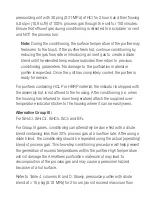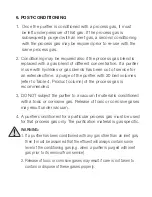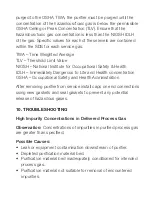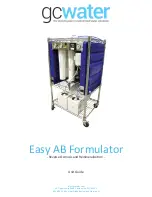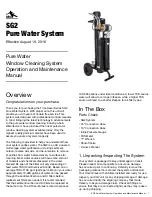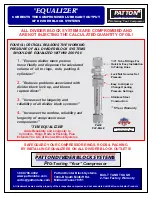
with at least the minimum volume of inert gas listed above for
the specific assembly being purged).
• Purifiers exposed to “Intended Process Gases” listed for SIP,
FCP, NH3P and SF6P purification materials should be purged
with at least the minimum volume of inert gas listed above for
the specific assembly being purged (exceptions for SiH
4
,
Si
2
H
6
, SiH
3
CH
3
, and SiH(CH
3
)
3
which should be purged with
at least 10 times the volume of inert gas listed).
• Purifiers exposed to “Intended Process Gases” listed for
CLXP, HCLP, and HBRP purification materials should be
purged with at least 5 times the volume of inert gas listed
above for the specific assembly being purged.
3. Reduce the pressure in the purifier by closing the inlet valve(s)
on the purifier allowing the gas to vent to < 5 psig (0.03 MPa) –
venting to just above atmospheric pressure is best.
4. Pressurize the purifier by closing outlet valve(s) and opening
inlet valve(s) on the purifier allowing purge gas to enter the unit
until the pressure is > 60 psig (0.41 MPa) – do not exceed pres-
sure rating, MAWP, for purifier.
5. Measure the concentration of the toxic/hazardous gas in the
effluent gas by suitable means, such as a toxic gas monitor.
6. Continue to vent-purge cycling the purifier by alternately per-
forming steps 3 and 4 until the effluent no longer is hazardous.
7. Alternately, the process can be accelerated if venting (step 3) is
enhanced by evacuating the purifier to a pressure of – 12 psig
(– 0.83 MPa) or less;
i.e.
< 2.7 psia (< 186 millibar).
After purging, trace levels of hazardous gas in the purifier should
be reduced to a level below the Occupational Safety and Health
Administration (OSHA) TWA. If the concentrations cannot be








